Balsamic areas
Balsamic vinegar is mainly produced in two provinces of Emilia. The province of Modena and the province of Reggio Emilia. The use of the typical grapes of these two provinces, with a preference for the white Trebbiano ones which grow mainly in the hills but without disdaining lambrusco, more frequent in the plain, has limited the precise area of origin of this product. As opposed to the area of lambrusco which also includes the province of Mantua, the area of balsamic vinegar excludes another province which historically has a very close relationship with it. It is the province of Ferrara to which the provinces of Modena and Reggio were bound by a long and deep political bond dating back to the times, around 1500, in which the House of Este extended its influence and dominion over them. This bond is even more intense if we consider the fact that the definition of our balsamic vinegar dates back to this period. The two provinces in question, Modena and Reggio Emilia, morphologically speaking, do not differ from each other, keeping the hilly area to the south which then becomes mountainous, whereas the central flat area, which practically begins with the Via Emilia, slopes down towards the north in a low area where the Secchia and Panaro rivers lazily descend and which, at the end of their sinuous itinerary, are expected to the north by the majestic riverbed of the Po.
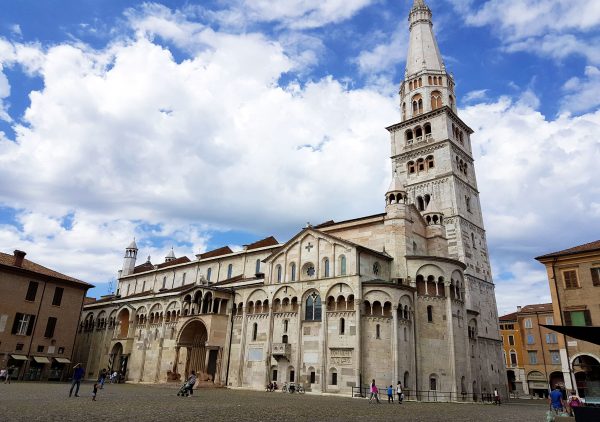
Modena
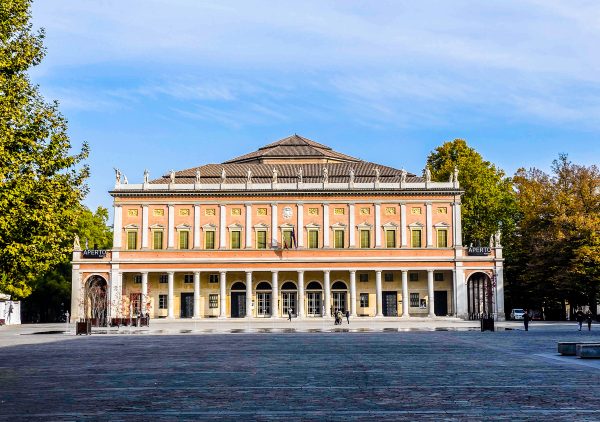
Reggio Emilia
Climate
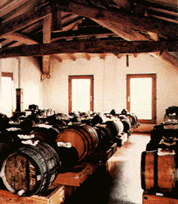 Climate is one of the main components of the peculiarities and even of the characteristics of our balsamic vinegar. Its role has been found to be fundamental in perfecting those natural processes which regulate the life of vinegar bacteria. In the long preparation of traditional balsamic vinegars, as well as in certain balsamic vinegars from Modena, it is indispensable that the location of the vinegar cellar is located in ventilated rooms and closely related to external environmental influences with regard to temperature. In this case, suitable environments appear to be the attics which can guarantee the direct action of the thermal excursions linked to the seasons. In fact in the areas of the emilian provinces of Modena and Reggio Emilia are recorded very strong differences between the temperatures of winters, generally rigid, and those of summers, torrid, thanks to which it is possible to obtain those particular and unique processes which determine the perfect formation and development of balsamic vinegar. Cold, in fact, favors the clarification and sedimentation of the mucilaginous substances and guarantees an intense activity of the odorous components, while heat provides a fervent and invigorating acetic activity.
Climate is one of the main components of the peculiarities and even of the characteristics of our balsamic vinegar. Its role has been found to be fundamental in perfecting those natural processes which regulate the life of vinegar bacteria. In the long preparation of traditional balsamic vinegars, as well as in certain balsamic vinegars from Modena, it is indispensable that the location of the vinegar cellar is located in ventilated rooms and closely related to external environmental influences with regard to temperature. In this case, suitable environments appear to be the attics which can guarantee the direct action of the thermal excursions linked to the seasons. In fact in the areas of the emilian provinces of Modena and Reggio Emilia are recorded very strong differences between the temperatures of winters, generally rigid, and those of summers, torrid, thanks to which it is possible to obtain those particular and unique processes which determine the perfect formation and development of balsamic vinegar. Cold, in fact, favors the clarification and sedimentation of the mucilaginous substances and guarantees an intense activity of the odorous components, while heat provides a fervent and invigorating acetic activity.
Balsamic Grapes
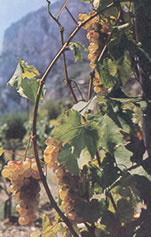 Balsamic vinegar is produced with different grapes typical of the provinces of Modena and Reggio Emilia. Queen grape according to tradition is Trebbiano, considered the best variety for this use. The peculiar thing is that this grape is white whereas even the most superficial observer does not forget that balsamic vinegar is a liquid more or less dense but with a dark amber color having more or less dark brown tones. The general belief of the layman is that it must come from a red grape. It is true that Lambrusco and other native red grapes of the area are also part of the recipe, however, according to the most ancient documents, the “recipe of balsamic vinegar” never excludes the presence of a significant percentage of Trebbiano. It has been tried to derive this choice from precise reasons related to the intrinsic character of the grape, such as the very late harvest which certainly promotes a natural concentration of sugar, however it is fair to think that also the customs of the past influenced this choice, it is enough to remember that the first seventeenth-century documents about the percentage of types of grapes indicate a clear prevalence of white grapes cultivation over red ones and consequently it is necessary to deduce that an abundant raw material corresponds to an equally rich use of it. It should be added that Trebbiano has the particularity of a later harvesting, a characteristic which certainly promotes the concentration of sugars.
Balsamic vinegar is produced with different grapes typical of the provinces of Modena and Reggio Emilia. Queen grape according to tradition is Trebbiano, considered the best variety for this use. The peculiar thing is that this grape is white whereas even the most superficial observer does not forget that balsamic vinegar is a liquid more or less dense but with a dark amber color having more or less dark brown tones. The general belief of the layman is that it must come from a red grape. It is true that Lambrusco and other native red grapes of the area are also part of the recipe, however, according to the most ancient documents, the “recipe of balsamic vinegar” never excludes the presence of a significant percentage of Trebbiano. It has been tried to derive this choice from precise reasons related to the intrinsic character of the grape, such as the very late harvest which certainly promotes a natural concentration of sugar, however it is fair to think that also the customs of the past influenced this choice, it is enough to remember that the first seventeenth-century documents about the percentage of types of grapes indicate a clear prevalence of white grapes cultivation over red ones and consequently it is necessary to deduce that an abundant raw material corresponds to an equally rich use of it. It should be added that Trebbiano has the particularity of a later harvesting, a characteristic which certainly promotes the concentration of sugars.
White grapes
Trebbiano di Spagna, Spergola and other expected varieties
Red grapes
All Lambruscos, Ancellotta, Fortana or Golden Grape, Malbo Gentile, other varieties
Places to visit
The provinces of Balsamic Vinegar are places rich in historical memories, and at the same time little known because they are outside the classic circuits of tourism. In fact, we find ourselves in areas which, in ancient times, were crossed by various populations of Nordic and Etruscan-Roman origin, who, through crossings and permanent settlements due to the ease of transit, not hindered by any significant orographic diaphragm, have gradually left important traces as evidence. We are talking about Etruscan or Roman settlements, about the presence of the Boi Gauls and their traces in the toponymy or about the advent of the Longobards who left us the beautiful Romanesque churches, we are talking about medieval castles and fortifications, or even extraordinary Renaissance courts. Museums, squares, churches, buildings and small villages intact in their ancient morphology. Perhaps to list the reasons of great historical and architectural interest is really improbable, however we are convinced that even the hasty visitor can find reason to deepen and discover such precious heritages, often unsuspected.
Modena, the Roman ‘Mutina’ of antiquity, the capital city of a ducal state which belonged to the House of Este from 1500 until the unification of Italy, is rich with an urban structure and with buildings which recall its importance of old, including the marvellous Romanic cathedral with its celebrated bell tower ‘Ghirlandina’, the Duke’s palace -now the seat of the military academy-, the Este museums etc. Reggio Em. has been an important provincial capital and it too has places of historical interest, as the cathedral and the Valli theatre; but it is a few kilometres from it in the hills that Countess Mathilda of Canossa had a system of castles erected in defence of her vast feud. Some of them are in a good state of repair and can still be visited. We must also mention Carpi’s marvellous Renaissance square and the several mansions of the same period to be found just about anywhere in the country. In the hills, nature has preserved attractive landscapes, whilst in the plains a strong urbanization has drastically reduced the charm of uncontaminated lands. However, it is possible to walk through smallholdings and meadows of great beauty, and men and women still capable of living at the seasons’ rythm can still be encountered. There is a more and more active interest for the presence in the territory of advanced technology plants like the Ferrari factory, which is the seat of a fascinating museum of its own cars at Maranello, or like the De Tomaso and the Maserati plants, manufacturers of top class automobiles, famous and coveted throughout the world.
The vinegar cellars
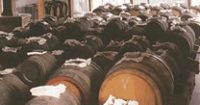
The reason of great interest is the visit by many food and wine lovers of the places where balsamic vinegar is actually produced. As a matter of fact, the evocative visit of vinegar cellars with barrels of vinegar in sequence in the attics of beautiful rural houses, is becoming an occasion to discover the unique charm of this meeting connected to the uniqueness of the aging process of these products.
Lambrusco wineries
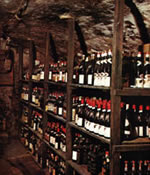
Wineries in the provinces are getting more and more equipped with tasting rooms with the possibility of guided tours, with events and initiatives aimed at enhancing this heritage of the territory.
If you want to buy online the lambruschi of the area, visit the site https://www.lambrusco.com/
Kitchens
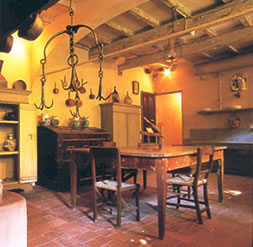
It is well known that in these areas people willingly stop by to taste a typical cuisine rich in flavors anchored to tradition, indissolubly combined with lambrusco, parmigiano reggiano and balsamic vinegar to form a formidable union. There are prestigious restaurants and simple country trattorias united by a very original criterion, the hard scrutiny carried out by the residents themselves in these places, qualified because they have always been accustomed to the genuineness of home-made cooking, where grandmothers are still used to performing the most classic and tasty typical dishes based on cappelletti or tortellini, zampone and cotechino, gnocco fritto and tigelle. Discover the recipes based on balsamic vinegar!
